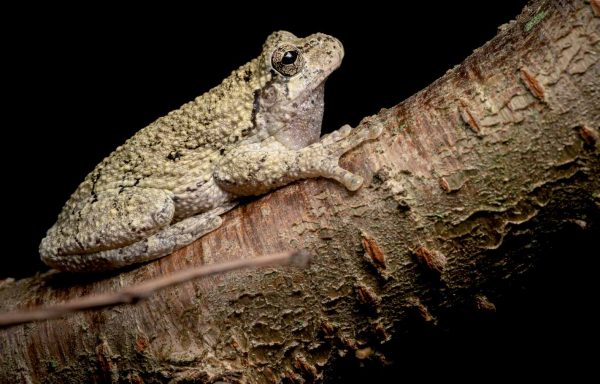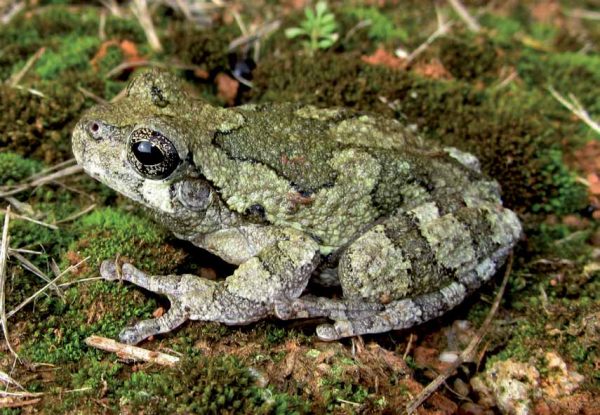
A gray treefrog © Steven Johnson
With this week’s Frog Friday we introduce another of Virginia’s tree-dwelling amphibians, the Gray Treefrog. This little frog is considered medium sized for a treefrog, ranging from 1.25 to 2.5 inches in length. They are found throughout most of central Virginia including the Blue Ridge Mountains and the Piedmont.
Coloration in Gray Treefrogs varies widely depending on their environment. The frog’s Latin or scientific name is Hyla versicolor meaning belonging to the woods (Hyla) and various colors (versicolor). Typically they have a dark “star-shaped” pattern on their back with many small warts. Background coloration varies from gray to tan or even light green. It has a light spot beneath the eye, and bright yellow or orange on the on concealed surface of the thighs. The Gray Treefrog is virtually identical in appearance to Cope’s Gray Treefrog and can only be differentiated in Virginia by their call and distribution. Cope’s Gray Treefrogs are found in forested habitats in the Coastal Plain and far western Virginia.

Gray treefrog © Jeff Beane
As the name implies, Gray Treefrogs are typically found among the foliage of small trees and shrubs in close proximity to water. Seldom found on the ground except during the breeding season, they spend most of their time foraging on insects primarily butterfly, moth, and/or beetle larvae.
Breeding season typically occurs from April–August in small, shallow water habitats like roadside ditches, vernal ponds, and woodland depressions. Tadpoles metamorphose quickly and small frogs exit these temporary water habitats in about 30 days. The call is a low frequency, melodic trill that lasts for one to three seconds and ends abruptly.
Call of the Gray Treefrog
Gray Treefrog photos by John White.


